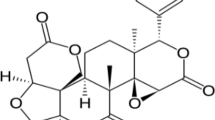Abstract
The present study describes an electrochemical aptamer-based method for the determination of bisphenol A (BPA). It is making use of gold nanoparticles (AuNPs) immobilized on a conjugate between multiwalled carbon nanotubes and thiol-functionalized magnetic nanoparticles (MWCNT/Fe3O4-SH) that are modified with an aptamer. The nanocomposite was characterized by Fourier transform infrared spectroscopy, field emission scanning electron microscopy, transmission electron microscopy, vibrating sample magnetometry, elemental mapping analysis and energy dispersive X-ray diffraction. The aptasensor, typically operated at 0.20 V (vs. Ag/AgCl), has a linear response in the 0.1 to 8 nM BPA concentration range, a low detection limit (0.03 nM), and high sensitivity (86.43 μA nM−1 cm−2). Voltammetric experiments were performed by using the hexacyanoferrate redox system as an electrochemical probe. The results indicate that the presence of AuNPs, magnetic nanoparticles and MWCNTs results a synergistic electrochemical augmentation. The method is highly selective, sensitive, efficient and environmentally friendly. The method was successfully applied to the determination of BPA in spiked real samples.

Aptasensor fabricated by MWCNT/Fe3O4-SH@Au nanocomposite and anti-BPA aptamer. The conformation of aptamer change after BPA binding, triggering a decrease in the electron transfer of Fe(CN)63−/4− on the electrode surface. The observed decline was detectable as a function of BPA concentration.







Similar content being viewed by others

References
Mirzajani H, Cheng C, Wu J, Chen J, Eda S, Aghdam EN, Ghavifekr HB (2017) A highly sensitive and specific capacitive aptasensor for rapid and label-free trace analysis of bisphenol a in canned food. Biosens Bioelectron 89:1059–1067
An analysis of European plastics production, demand and waste data. http://www.plasticseurope.org/Document/plastics-the-facts/, 2014 (accessed 15.01.22)
Hadavifar M, Bahramifar N, Younesi H, Li Q (2014) Adsorption of mercury ions from synthetic and real wastewater aqueous solution by functionalized multi-walled carbon nanotube with both amino and thiolated groups. Biochem Eng J 237:217
Temel NK, Gürkan R (2017) A micellar sensitized kinetic method for quantification of low levels of bisphenol a in foodstuffs by spectrophotometry. Anal Methods 9:1190–1200
Filippou O, Deliyanni EA, Samanidou VF (2016) Fabrication and evaluation of magnetic activated carbon as adsorbent for ultrasonic assisted magnetic solid phase dispersive extraction of bisphenol a form milk prior to high performance liquid chromatographic analysis with ultraviolet detection. J Chromatogr A 1479:20
Zimmers SM, Browne EP, O’Keefe PW, Anderton DL, Kramer L, Reckhow DA, Arcaro KF (2014) Determination of free bisphenol a concentrations in breast milk of U.S. women using a sensitive LC/MS/MS method. Chemosphere 104:237
Pastor-Belda M, Bastida D, Campillo N, Pérez-Cárceles MD, Motas M, Vinas P (2016) A study of the influence on diabetes of free and conjugated bisphenol a concentration in urine: development of a simple microextraction procedure using gas chromatography–mass spectrometry. J Pharm Biomed Anal 129:458–465
Zhang X, Zhu D, Huang C, Sun Y, Lee Y (2015) Sensitive detection of bisphenol a in complex samples by in-column molecularly imprinted solid-phase extraction coupled with capillary electrophoresis. Microchem J 121:1–5
Xue F, Wu J, Chu H, Mei Z, Ye Y, Liu J, Zhang R, Peng C, Chen W (2013) Electrochemical aptasensor for the determination of bisphenol a in drinking water. Microchim Acta 180:109–115
Li O, Zhai X, Liu X, Wang L, Liu H, Wang H (2016) Electrochemical determination of bisphenol a at ordered mesoporous carbon modified nano-carbon ionic liquid paste electrode. Talanta 148:362–369
Alsaafin A, McKeague M (2017) Functional nucleic acids as in vivo metabolite and ion biosensors. Biosens Bioelectron 94:94–106
Rapini R, Marrazza G (2017) Electrochemical aptasensors for contaminants detection in food and environment: recent advances. Bioelectrochemistry 118:47–61
Zhu Y, Zhou C, Yan X, Yan Y, Wang Q (2015) Aptamer-functionalized nanoporous gold film for high-performance direct electrochemical detection of bisphenol a in human serum. Anal Chim Acta 883:81–89
Liu Y, Zhang X, Yang J, Xiong E, Zhang X, Chen J (2016) Sensitive detection of bisphenol a based on a ratiometric electrochemical aptasensor. Can J Chem 94:509–514
Derikvand Z, Abbasi AR, Roushani M, Derikvand Z, Azadbakht Z (2016) Design of ultra- sensitive bisphenol A-aptamer based on Pt nanoparticles loading to polyethyleneimine functionalized carbon nanotubes. Anal Biochem 512:47–57
Cui H, Wu J, Eda S, Chen J, Chen W, Zheng L (2015) Rapid capacitive detection of femtomolar levels of bisphenol a using an aptamer-modified disposable microelectrode array. Microchim Acta 182:2361–2367
Ebrahimpour E, Amiri A, Baghayeri M, Rouhi M, Lakouraj MM (2017) Poly (indole-co-thiophene)@Fe3O4 as novel adsorbents for the extraction of aniline derivatives from water samples. Microchem J 131:174–181
Rouhi M, Lakouraj MM, Baghayeri M, Hasantabar V (2017) Novel conductive magnetic nanocomposite based on poly (indole-co-thiophene) as a hemoglobin diagnostic biosensor: synthesis, characterization and physical properties. Int J Polymer Mater 66:12–19
Baghayeri M, Zare EN, Lakouraj MM (2014) A simple hydrogen peroxide biosensor based on a novel electro-magnetic poly(p-phenylenediamine)@Fe3O4 nanocomposite. Biosens Bioelectron 55:259–265
Wang J (2012) Electrochemical biosensing based on noble metal nanoparticles. Microchim Acta 177:245–270
Tian Y, Chen L, Zhang J, Ma Z, Song C (2012) Bifunctional au-nanorod@Fe3O4 nanocomposites: synthesis, characterization, and their use as bioprobes. J Nanopart Res 14:998
Zhou L, Wang J, Li D, Li Y (2014) An electrochemical aptasensor based on gold nanoparticles dotted graphene modified glassy carbon electrode for label-free detection of bisphenol a in milk samples. Food Chem 162:34–40
Deiminiat B, Rounaghi GH, Arbab-Zavar MH, Razavipanah I (2016) A novel electrochemical aptasensor based on f-MWCNTs/AuNPs nanocomposite for label-free detection of bisphenol a. Sensors Actuators B Chem 242:158
Thakur H, Kaur N, Sareen D, Prabhakar N (2017) Electrochemical determination of M. Tuberculosis antigen based on poly(3,4-ethylenedioxythiophene) and functionalized carbon nanotubes hybrid platform. Talanta 171:115
Acknowledgements
We would like to thank the post-graduate office of Guilan University and Hakim Sabzevari University for the support of this work.
Author information
Authors and Affiliations
Corresponding author
Ethics declarations
The author(s) declare that they have no competing interests.
Electronic supplementary material
ESM 1
(DOC 669 kb)
Rights and permissions
About this article
Cite this article
Baghayeri, M., Ansari, R., Nodehi, M. et al. Voltammetric aptasensor for bisphenol A based on the use of a MWCNT/Fe3O4@gold nanocomposite. Microchim Acta 185, 320 (2018). https://doi.org/10.1007/s00604-018-2838-y
Received:
Accepted:
Published:
DOI: https://doi.org/10.1007/s00604-018-2838-y



